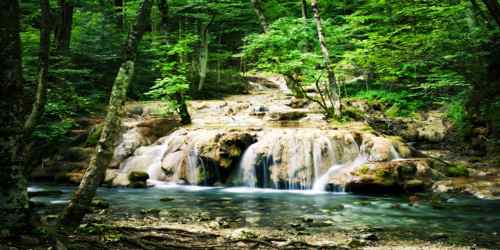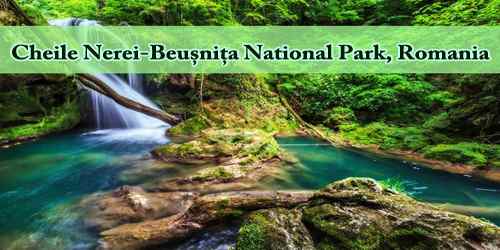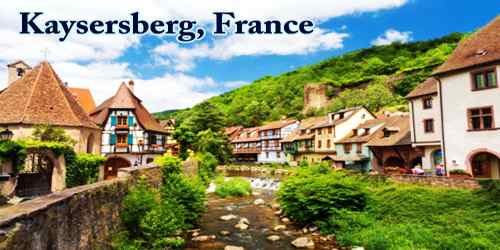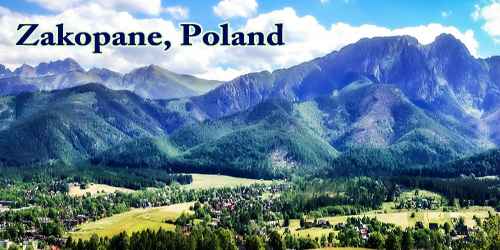Cheile Nerei-Beușnița National Park is one of the most beautiful places in Romania. The Nera Gorge-Beușnița National Park (Romanian: Parcul Naţional Cheile Nerei-Beușniţa) (national park category II IUCN) is a protected area situated in Romania, in Caraş-Severin County. Because it’s tucked away in a remote corner of western Romania, this national park can feel like a beautiful secret.
The park is home to an incredible level of biodiversity among smaller animals like amphibians and birds. What draws most visitors here though is the park’s landscape which is full of gorges, lakes, and waterfalls. Finding waterfalls like Izvorul Bigăr, the Bigar Waterfall, and the Beusnita Waterfalls should be a priority for those looking for memorable spots, as should be the lakes of Ochiul Beiului and Dracului.
Located in the southern part of Aninei Mountains, this protected area covers 36,758 hectares from Caras-Severin, the only county in Romania with three protected areas of this rank: Cheile Nerei-Beusnita, Domogled-Valea Cernei and Semenic-Cheile Carasului.
Protected areas included in the park: Nera Gorge-Beușnița, Șușara Gorge, Ducin, Izvorul Bigăr, Izvoarele Nerei, Lisovacea and Valea Ciclovei-Ildia.
Climate is a temperate continental, with moderate winters, warm summers, low thermal amplitude, with rich rainfall, with Mediterranean influences. The hydrological network includes Nera River and its tributaries: Coşava, Bănia, Beu, Ducin, Miniş, Nergana, Nerganiţa, Prigor, Rudăria, and Şopotu.

The geomorphology of the area created a dazzling landscape with gorges, hills, valley, caves, ravines, waterfalls and rare lakes. They’re all key natural attractions of this national park where swamps, wetlands, forests and cliffs are the predominant habitats. The most famous of its natural attractions are Ochiul Beiului and the Devil’s Lakes, Beusnita Waterfalls and its over 20 km long gorges.
Either way, hiking or kayaking, visitors will see the 12 meters deep Devil’s Lake, the only lake in Romania formed after the collapse of a cave ceiling. Rather difficult to reach, this turquoise lake was named after the legend of a devil who drowned in the dark waters of the lake.
Another lake is, however, the most popular attraction. Ochiul Beiului, a lake so blue that for a moment visitors will feel they are half the world away. Only three meters deep, this lake is just a 30 minutes’ walk from Podu Beiului, and is an all year round attraction. Supplied by a karst spring, Ochiul Beiului never changes its tropical blue color and never freezes. Like the Devil’s Lake, Ochiul Beiului also gets its name from a local legend, this time from a tragic love story.
On the territory of the protected area it has been identified several species of flora with European elements, Central European and Euro-Asian.
Vegetation of forests consists of trees and shrubs: English Oak (Quercus robur), Common hornbeam (Carpinus betulus), European beech (Fagus sylvatica), European ash (Fraxinus excelsior), Turkey oak (Quercus cerris), Sessile Oak (Quercus petraea), Black Alder (Alnus glutinosa), European yew (Taxus baccata), Manna Ash (Fraxinus ornus), Turkish Hazel (Corylus colurna), European Cornel (Cornus mas), Eurasian smoketree (Cotynus coggygria), Ruscus (species of: Ruscus aculeatus or Ruscus hypogllosum) or Lilac (Syringa vulgaris).
Species of grass: orchid (Himantoglossum caprinum), Fritillaria (Fritillaria montana), yellow linum (Linum uninerve), Asplenium ceterach (Ceterach officinarum), Cephalaria (Cephalaria laevigata), monkey orchid (Orchis simia), fragrant orchid (Gymnadenia conopsea), corydalis (Corydalis pumila), crocus (Crocus flavus).
Cheile-Nerei Beusnita National Park has many hiking trails to choose from. Visitors can hike the complete itinerary of the gorges, from Sopotu Nou to Sasca Romana that also includes the Devil’s Lake and the rock tunnels between Podu Bei and Sasca Romana. Or they can leave from Sasca Romana on the suspended bridge, through the rock tunnels to Podu Bei, Ochiul Beiului Lake and the waterfalls of Beusnita.
Another option is hiking from the old mining village Sasca Montana to the Devil’s Lake. If any visitors don’t have enough time and they really want to see this lake, they can drive from Sasca Montana to Poiana Logor and hike from there around 2-3 hours to the lake.
The park is home to a wide variety of animals, fish and plant-life. Some of the animals visitors can expect to see in the park range from migratory birds to small rodent-like animals and even several species of lizards. Some of the most interesting wildlife in the park includes:
- Brown Bear
- Grey Wolves
- Eurasian Eagle-Owls
- European Otters
- Green Lizards
- European Honey Buzzards (Pernis apivorus)
Species of reptiles, amphibians, and frogs: common adder (Vipera berus), green lizard (Lacerta viridis), smooth snake (Coronella austriaca), fire salamander (Salamandra salamandra), alpine newt (Triturus alpestris), common toad (Bufo bufo) or yellow-bellied toad (Bombina veriegata).
Species of fish: Danube gudgeon (Gobio uranoscopus), Mediterranean barbel (Barbus meridionalis), Sabanejewia aurata, streber (Zingel streber), Balkan loach (Cobitis elongata), Kessler’s gudgeon (Gobio kessleri) or Amur bitterling (Rhodeus sericeus amarus).
Visitors will need at least four days to discover on foot the natural attractions from Cheile-Nerei Beusnita National Park, one of the most remote wilderness areas in Romania. The best time is from late spring to late autumn, and visitors can easily combine it with a visit to the nearby Iron Gates NaturePark and the watermills park from Eftimie Murgu.
Information Sources:
















